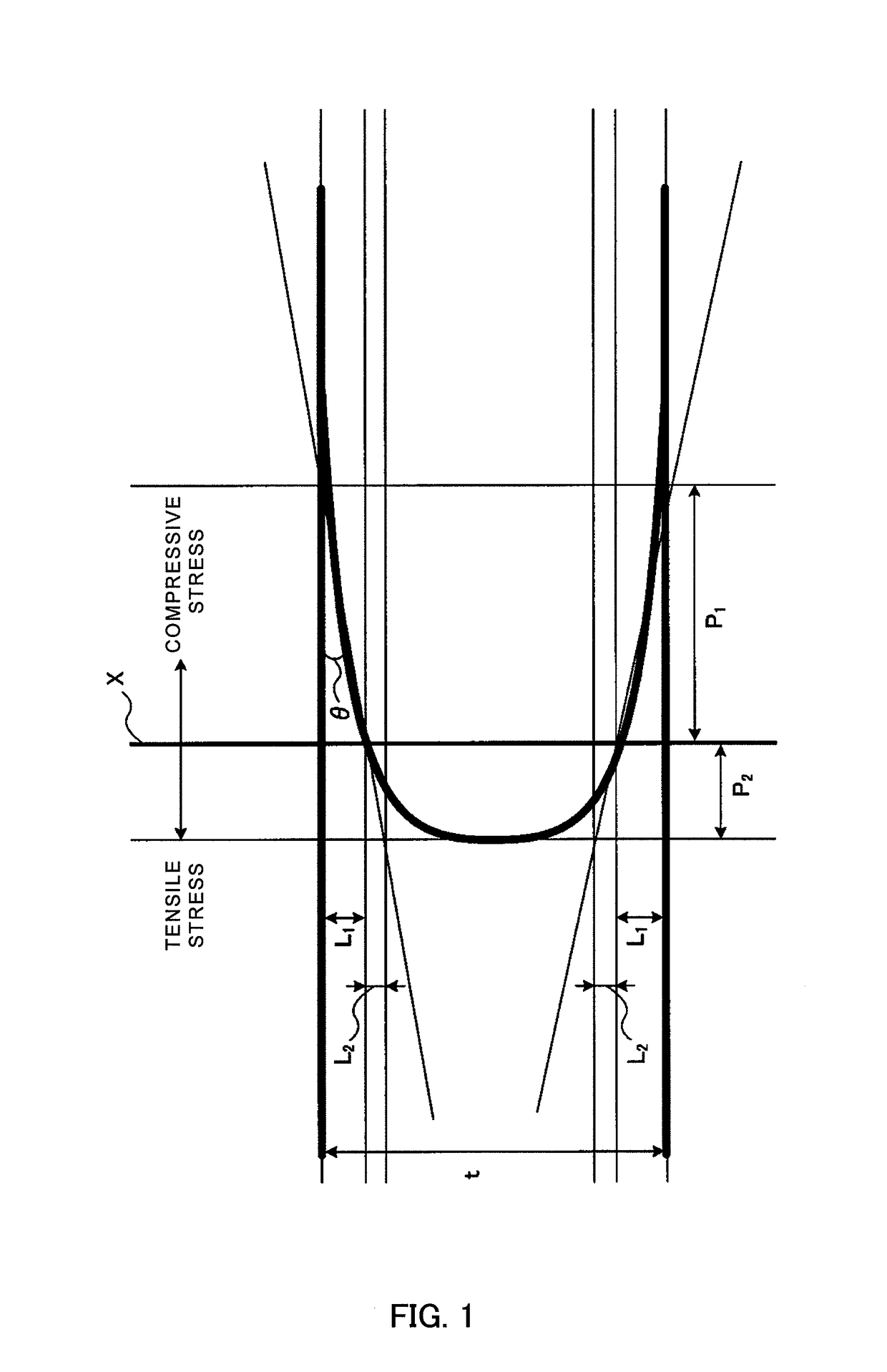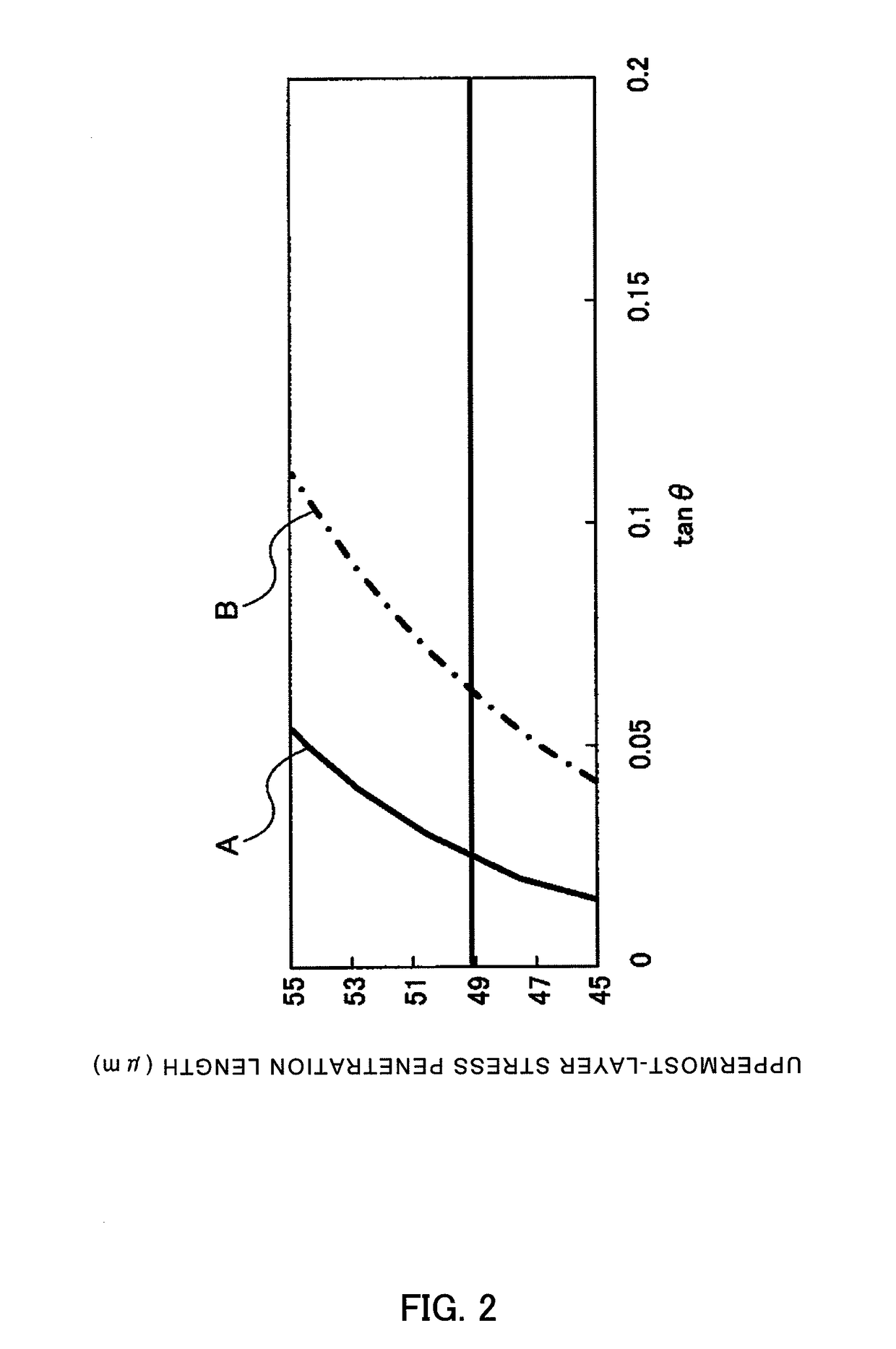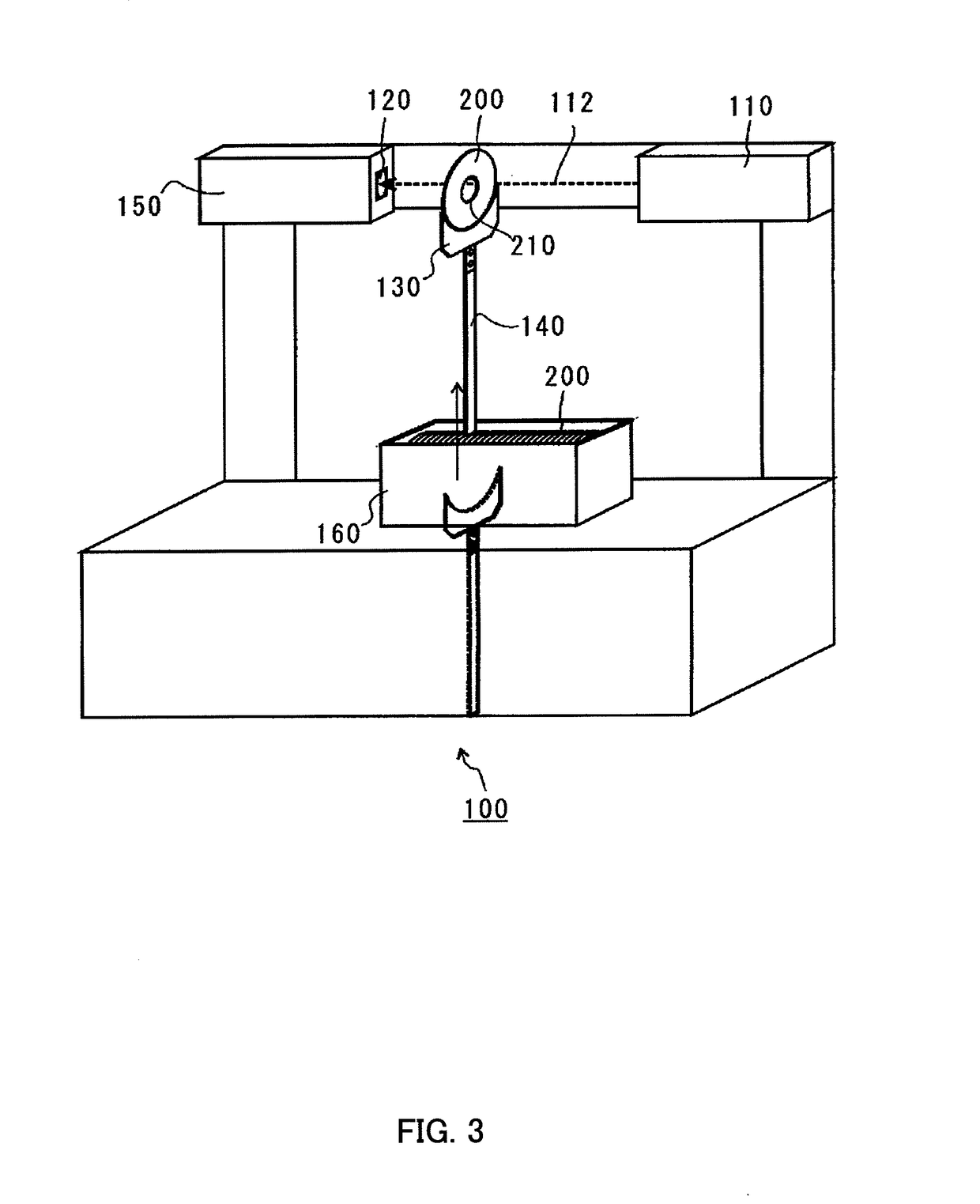Glass substrate for magnetic disk and manufacturing method of the same
a technology of glass substrate and magnetic disk, which is applied in the direction of magnetic materials for record carriers, manufacturing tools, instruments, etc., can solve the problems of heavy load on the magnetic disk
- Summary
- Abstract
- Description
- Claims
- Application Information
AI Technical Summary
Benefits of technology
Problems solved by technology
Method used
Image
Examples
embodiment 1
[0050]A glass substrate for a magnetic disk according to the invention is a glass substrate for a magnetic disk installed in a hard disk drive (HDD), etc. for example. The magnetic disk is, for example, a recording medium enabling high-density information signals to be recorded and reproduced by the perpendicular magnetic recording system. Further, the glass substrate for a magnetic disk is mainly used for 1.8-inch magnetic disks and 2.5-inch magnetic disks.
[0051]In the glass substrate for a magnetic disk according to the invention, the penetration length in the uppermost-portion stress layer on the main surface is 49.1 μm or less, and when it is assumed that an angle between the main surface and compressive stress in a stress profile by a Babinet compensator method is θ, a value y of {12·t·ln(tan θ)+(49.1 / t)} is the penetration length in the uppermost-portion stress layer or less. Therefore, the glass substrate is capable of meeting impact resistance higher than the currently requi...
example
[0087]First, melted alumino silicate glass was formed in the shape of a disk by direct press using an upper die, lower die and barrel die, and plate-shaped amorphous glass was obtained. Next, both main surfaces of the plate-shaped glass underwent lapping processing, and a disk-shaped glass base material was obtained. Then, a hole portion was formed at the center of the glass base material using a diamond cutter, and a disk-shaped glass substrate was obtained (coring). In addition, in the used alumino silicate glass, main components were SiO2: 70 percent by mass, Al2O3: 10 percent by mass., Li2O: 5 percent by mass, Na2O: 7 percent by mass, ZrO2: 8 percent by mass.
[0088]Next, end faces of the glass substrate underwent mirror-surface polishing by a brush polishing method. At this time, used as the polishing grains was slurry (free polishing grains) containing cerium dioxide polishing grains. Further, the inner circumferential end portion underwent mirror-surface polishing by a magnetic...
embodiment 2
[0098]In the method of manufacturing the glass substrate for a magnetic disk in this Embodiment, there are four aspects i.e. manufacturing method 1, manufacturing method 2, manufacturing method 3 and manufacturing method 4 as described below.
[Manufacturing Method 1 of the Glass Substrate for a Magnetic Disk]
[0099]Manufacturing method 1 of the glass substrate for a magnetic disk of this Embodiment is a manufacturing method of a glass substrate for a magnetic disk including a chemical reinforcement treatment step of immersing a disk-shaped glass substrate with a circular hole formed at its center portion in a chemical reinforcement treatment solution, causing ion exchange for replacing relatively small ions contained in the surface of the glass substrate with relatively large ions contained in the chemical reinforcement treatment solution, and thereby creating a compressive stress layer in the surface of the glass substrate, and is characterized in that the chemical reinforcement trea...
PUM
| Property | Measurement | Unit |
|---|---|---|
| surface roughness Ra | aaaaa | aaaaa |
| length | aaaaa | aaaaa |
| surface roughness Ra | aaaaa | aaaaa |
Abstract
Description
Claims
Application Information
 Login to View More
Login to View More - R&D
- Intellectual Property
- Life Sciences
- Materials
- Tech Scout
- Unparalleled Data Quality
- Higher Quality Content
- 60% Fewer Hallucinations
Browse by: Latest US Patents, China's latest patents, Technical Efficacy Thesaurus, Application Domain, Technology Topic, Popular Technical Reports.
© 2025 PatSnap. All rights reserved.Legal|Privacy policy|Modern Slavery Act Transparency Statement|Sitemap|About US| Contact US: help@patsnap.com



